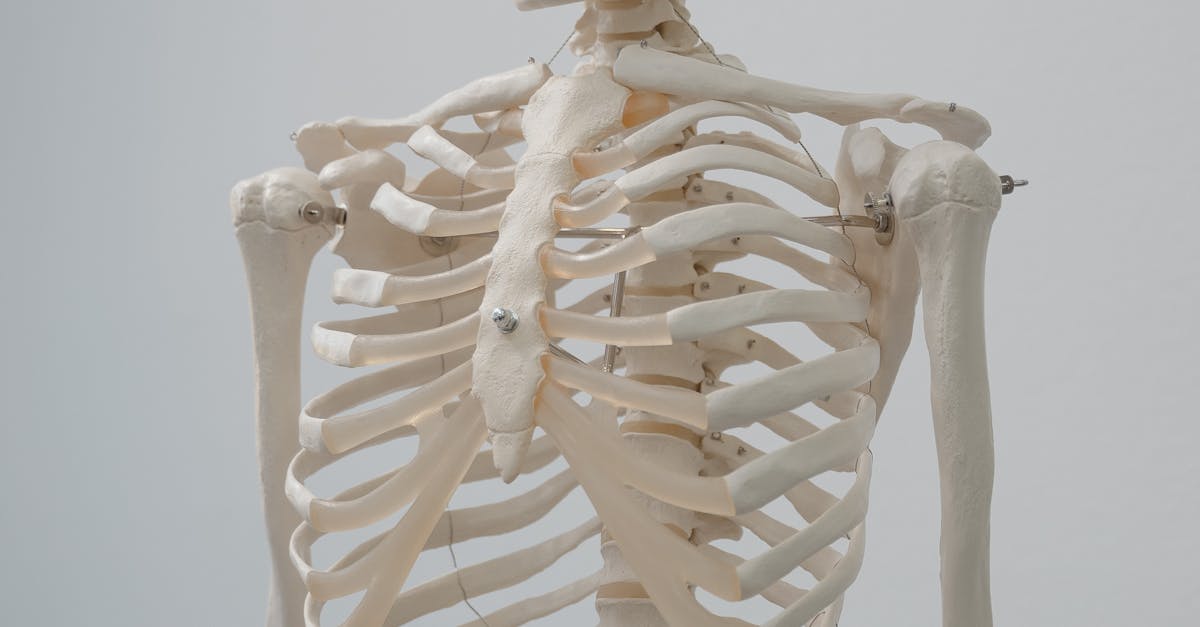Hip Flexor Hurts When Lifting Leg: Managing Discomfort and Strengthening
Unlocking Relief and Strength: A Comprehensive Guide to Hip Flexor Health

Are you experiencing hip flexor pain when lifting your leg? You’re not alone. This common issue can occur due to various factors, ranging from muscle strains and tightness to underlying conditions. In this comprehensive guide, we’ll delve into the causes of hip flexor pain, effective management strategies, strengthening exercises, and preventive measures. By understanding the root of your discomfort, implementing the techniques outlined here, and incorporating proactive habits, you can alleviate pain, improve mobility, and enjoy a renewed sense of comfort in your daily movements.
Our journey begins with exploring the anatomy and function of the hip flexor muscles, the key players in leg movement and stability. Next, we’ll identify potential causes of pain and provide a roadmap for effective pain management. The article will then guide you through a series of targeted exercises designed to strengthen your hip flexors and enhance overall mobility. Finally, we’ll discuss preventive measures to help you sidestep future discomfort, empowering you with strategies for long-term hip health.
1. Hip Flexor Anatomy and Function
Hip Flexor Anatomy and Function: Understanding the Key to Leg Movement and Stability
The hip flexor muscle group plays a pivotal role in the mobility and stability of our lower body. These muscles, situated at the front of the hip, are responsible for lifting the thigh towards the body, a motion crucial for walking, running, and other everyday activities. The primary hip flexor muscles include the iliacus, psoas major, and rectus femoris.
The iliacus muscle originates from the inner surface of the pelvis and inserts into the lesser trochanter of the femur (thigh bone). The psoas major originates from the lumbar vertebrae (lower back) and also inserts into the lesser trochanter. These two muscles work in conjunction to flex the hip joint, bringing the thigh forward.
The rectus femoris, while technically part of the quadriceps group, also contributes to hip flexion. It originates from the anterior (front) surface of the pelvis and inserts into the patella (kneecap). When the rectus femoris contracts, it not only extends the knee but also assists in hip flexion.
Together, the hip flexor muscles allow us to lift our legs, walk, climb stairs, and perform a wide range of athletic movements. Understanding their anatomy and function is essential for maintaining optimal hip health and preventing discomfort or injury.
2. Causes of Hip Flexor Pain When Lifting Leg

Causes of Hip Flexor Pain When Lifting Leg: Unraveling the Potential Culprits
Hip flexor pain when lifting the leg can stem from various causes, ranging from muscle strains and tightness to underlying medical conditions. Here are some potential culprits:
-
Muscle Strain: Overexertion or sudden forceful movements can strain the hip flexor muscles, leading to pain, tenderness, and reduced range of motion. This is a common injury among athletes and individuals engaging in strenuous activities.
-
Muscle Tightness: Prolonged sitting, inadequate stretching, or muscle imbalances can cause the hip flexors to become tight and inflexible. Tight hip flexors can restrict movement and cause discomfort, especially when lifting the leg.
-
Hip Bursitis: Bursitis is the inflammation of a fluid-filled sac (bursa) that cushions the hip joint. Hip bursitis can develop due to overuse, trauma, or underlying conditions like rheumatoid arthritis. It can cause pain, swelling, and tenderness in the hip area, which may worsen with leg lifting.
-
Other Medical Conditions: In some cases, hip flexor pain may be a symptom of an underlying medical condition, such as osteoarthritis, rheumatoid arthritis, or a hip labral tear. These conditions can cause inflammation, damage to the hip joint, and restricted movement, leading to pain when lifting the leg.
Identifying the underlying cause of your hip flexor pain is crucial for proper treatment and management. If you experience persistent pain or discomfort, it’s essential to consult a healthcare professional for an accurate diagnosis and appropriate interventions.
3. Managing Hip Flexor Pain
Managing Hip Flexor Pain: A Comprehensive Guide to Relief
Hip flexor pain can be effectively managed through a combination of strategies, including rest, cold therapy, stretching, and pain relievers. Here’s a closer look at each approach:
-
Rest: One of the most effective ways to manage hip flexor pain is to give the muscles time to rest and recover. Avoid activities that aggravate the pain, such as strenuous exercise or prolonged sitting. Elevating the affected leg and applying ice packs can further reduce inflammation and discomfort.
-
Cold Therapy: Applying ice packs to the affected area for 15-20 minutes at a time, several times a day, can help reduce pain and inflammation. Cold therapy works by constricting blood vessels, which slows down blood flow and reduces swelling.
-
Stretching: Gentle stretching exercises can help improve flexibility and range of motion in the hip flexor muscles. Stretches that target the hip flexors include the kneeling hip flexor stretch, standing quad stretch, and hip flexor resistance exercise. Perform these stretches regularly to promote muscle relaxation and reduce pain.
-
Pain Relievers: Over-the-counter pain relievers, such as ibuprofen or acetaminophen, can help alleviate hip flexor pain. These medications work by blocking pain signals from reaching the brain. In some cases, prescription pain relievers may be necessary for more severe pain.
It’s important to note that these strategies are generally effective for managing mild to moderate hip flexor pain. If your pain is severe, persistent, or accompanied by other symptoms such as swelling, redness, or fever, it’s essential to consult a healthcare professional for proper diagnosis and treatment.
4. Exercises to Strengthen Hip Flexors

Exercises to Strengthen Hip Flexors: Enhancing Mobility and Reducing Pain
Strengthening the hip flexor muscles is crucial for improving mobility, reducing pain, and preventing future discomfort. Here are a few exercises specifically designed to target and strengthen these muscles:
-
Kneeling Hip Flexor Stretch: Begin by kneeling on one knee with the other leg extended behind you. Slowly lean forward, keeping your back straight, until you feel a stretch in the front of your hip. Hold the stretch for 30 seconds and repeat with the other leg.
-
Standing Quad Stretch: Stand with your feet shoulder-width apart. Bend your right knee and grab your right foot with your right hand, pulling your heel towards your buttocks. Hold the stretch for 30 seconds and repeat with the other leg.
-
Hip Flexor Resistance Exercise: Attach a resistance band to a fixed object at knee height. Stand facing the anchor point and loop the other end of the band around your right foot. Step forward with your right leg and bend your knee, bringing your thigh towards your chest. Slowly return to the starting position and repeat for 10-12 repetitions.
These exercises should be performed regularly as part of a comprehensive hip flexor strengthening program. Start with a manageable number of repetitions and gradually increase the intensity and duration as you get stronger. It’s important to listen to your body and rest if you experience any pain or discomfort.
Kneeling Hip Flexor Stretch
Kneeling Hip Flexor Stretch: A Step-by-Step Guide to Benefits
The kneeling hip flexor stretch effectively targets the hip flexor muscles, improving flexibility and range of motion. Here’s a step-by-step guide to performing this stretch:
-
Starting Position: Begin by kneeling on the floor with your right knee directly below your hip and your left leg extended straight back. Keep your back straight and your core engaged.
-
Lean Forward: Slowly lean forward, keeping your back straight and your left leg extended. Stop when you feel a stretch in the front of your right hip.
-
Hold and Breathe: Hold the stretch for 30 seconds, breathing deeply and relaxing into the stretch. Focus on keeping your hips level and your core engaged.
-
Return to Starting Position: Slowly return to the starting position by pushing back up with your right leg and straightening your body. Repeat the stretch on the other side.
Benefits of the Kneeling Hip Flexor Stretch:
- Improved hip flexor flexibility and range of motion
- Reduced hip pain and stiffness
- Enhanced mobility and performance in activities that require hip flexion
- Prevention of hip flexor injuries and tightness
- Improved posture and alignment
Standing Quad Stretch
Standing Quad Stretch: Technique and Hip Flexor Engagement
The standing quad stretch is an effective exercise that targets both the quadriceps muscles at the front of the thigh and the hip flexors. Here’s a step-by-step guide to performing the stretch correctly:
-
Starting Position: Stand with your feet shoulder-width apart and your back straight. Bend your right knee and grab your right foot with your right hand, pulling your heel towards your buttocks.
-
Engage Hip Flexors: As you pull your heel towards your buttocks, slightly tilt your pelvis forward. This engages your hip flexors and increases the stretch on the front of your hip.
-
Hold and Breathe: Hold the stretch for 30 seconds, breathing deeply and relaxing into the stretch. Focus on keeping your chest up and your core engaged.
-
Return to Starting Position: Slowly lower your leg back down and repeat the stretch on the other side.
How the Standing Quad Stretch Targets the Hip Flexors:
The standing quad stretch targets the hip flexors by engaging them during the stretch. As you pull your heel towards your buttocks, the hip flexors work to stabilize the hip joint and prevent it from hyperextending. Additionally, the forward tilt of the pelvis further activates the hip flexors, increasing the stretch on the front of the hip.
Benefits of the Standing Quad Stretch for Hip Flexors:
Improved hip flexor flexibility and range of motion Reduced hip pain and stiffness Enhanced mobility and performance in activities that require hip flexion Prevention of hip flexor injuries and tightness Improved posture and alignment
Hip Flexor Resistance Exercise
Hip Flexor Resistance Exercise: Building Strength with Bands or Weights
Hip flexor resistance exercises utilize resistance bands or weights to enhance the strength and power of the hip flexor muscles. Here’s a step-by-step guide to performing a hip flexor resistance exercise using a resistance band:
Banded Hip Flexor Exercise:
-
Starting Position: Attach a resistance band to a fixed object at knee height. Stand facing the anchor point and loop the other end of the band around your right foot. Step forward with your right leg and bend your knee, bringing your thigh towards your chest.
-
Engage Hip Flexors: Keep your core engaged and your back straight. Push through your right heel and extend your right leg forward, resisting the pull of the band. Focus on contracting your hip flexors to lift your thigh towards your body.
-
Hold and Return: Hold the position at the top of the movement for a moment, then slowly lower your leg back down to the starting position. Repeat for 10-12 repetitions.
Benefits of Hip Flexor Resistance Exercises:
- Increased hip flexor strength and power
- Improved mobility and range of motion in the hip joint
- Reduced risk of hip flexor injuries
- Enhanced performance in activities that require hip flexion, such as running, jumping, and kicking
- Improved posture and alignment
Using Weights for Hip Flexor Resistance:
Hip flexor resistance exercises can also be performed using weights. One effective exercise is the weighted hip flexor raise. To perform this exercise, lie on your back with a weight resting on your hips. Lift your legs off the ground and bend your knees, bringing your thighs towards your chest. Hold the position for a moment, then slowly lower your legs back down. Repeat for 10-12 repetitions.
5. Preventing Hip Flexor Pain
Preventing Hip Flexor Pain: Proactive Strategies for Staying Pain-Free
Hip flexor pain can be effectively prevented by implementing proactive measures that promote hip health and flexibility. Here are a few key strategies:
-
Proper Warm-up and Cool-down: Before engaging in activities that involve leg lifting, ensure a proper warm-up to prepare your hip flexors for movement. This can include light cardio, dynamic stretching, and activation exercises that target the hip flexors. Similarly, after exercise, take time to cool down with static stretching to help the muscles relax and reduce the risk of stiffness and pain.
-
Regular Stretching: Incorporate regular stretching into your routine to maintain hip flexor flexibility. Focus on stretches that target the hip flexors, such as the kneeling hip flexor stretch and the standing quad stretch. Hold each stretch for 30 seconds and repeat several times to improve range of motion and reduce the likelihood of muscle strain or tightness.
-
Maintain a Healthy Weight: Excess weight puts added stress on the hip joints and hip flexor muscles. Maintaining a healthy weight can help reduce the risk of hip flexor pain and other musculoskeletal issues. Engage in regular physical activity and follow a balanced diet to manage your weight and promote overall health.
-
Strengthening Exercises: Regularly strengthening the hip flexors can help improve their resilience and reduce the risk of injury. Incorporate exercises such as the hip flexor resistance exercise and the standing quad stretch into your routine. These exercises help build strength and stability in the hip flexors, making them less susceptible to pain and discomfort.
Hip Flexor Health Quiz
Test your understanding of the key points covered in this article by answering the following questions:
- Which of the following is NOT a potential cause of hip flexor pain when lifting the leg?
(a) Muscle strain (b) Hip bursitis (c) Arthritis (d) Shin splints
-
True or False: Resting the affected hip flexor muscles can help reduce pain and inflammation.
-
Which of the following exercises is effective for strengthening the hip flexors?
(a) Hamstring curl (b) Knee extension (c) Hip flexor resistance exercise (d) Quadriceps stretch
-
True or False: Maintaining a healthy weight is not important for preventing hip flexor pain.
-
Which of the following is NOT a recommended strategy for preventing hip flexor pain?
(a) Warm-up and cool-down before and after exercise (b) Regular stretching (c) Strengthening exercises (d) Smoking cessation
- (d) Shin splints
- True
- (c) Hip flexor resistance exercise
- False
- (d) Smoking cessation
